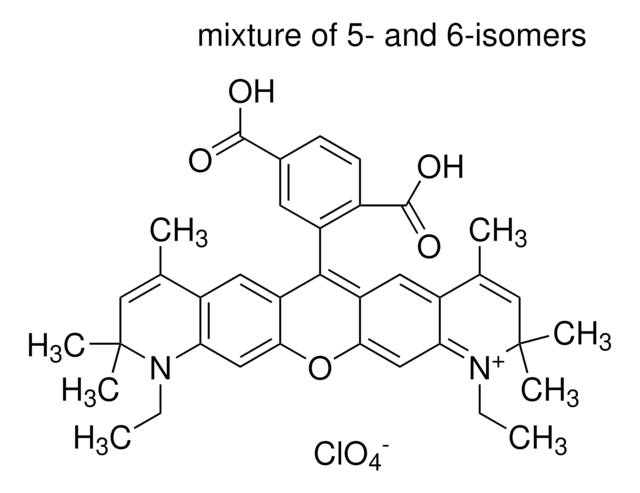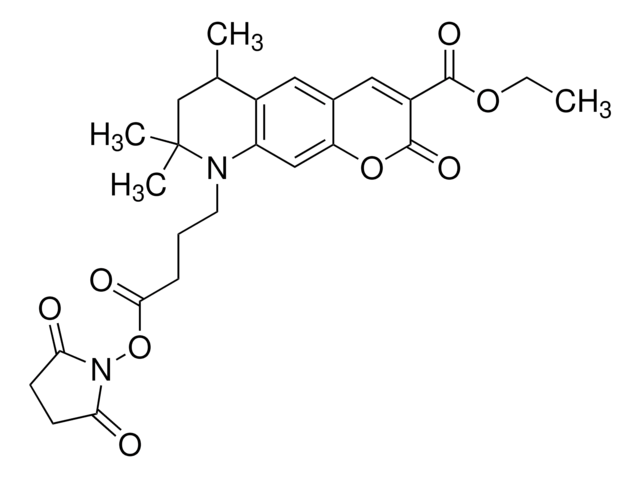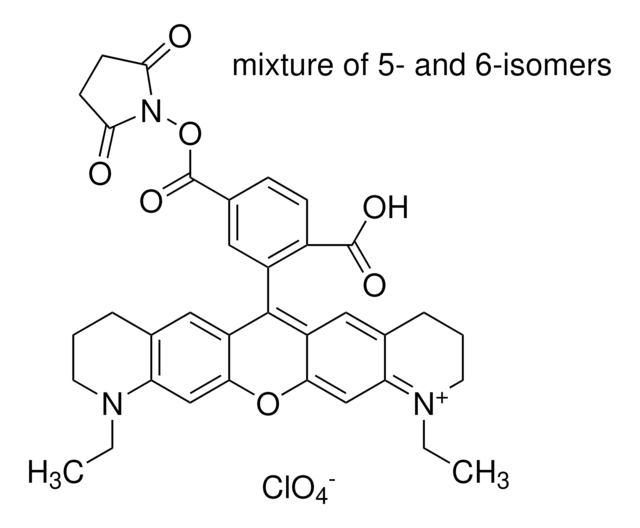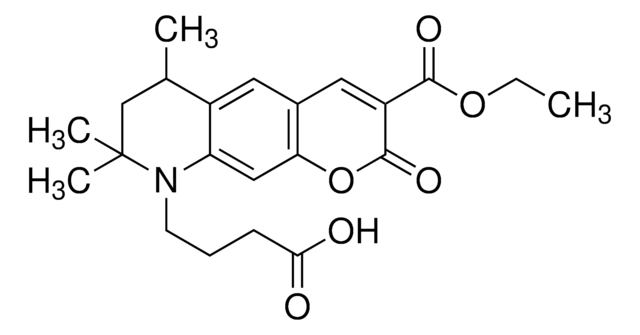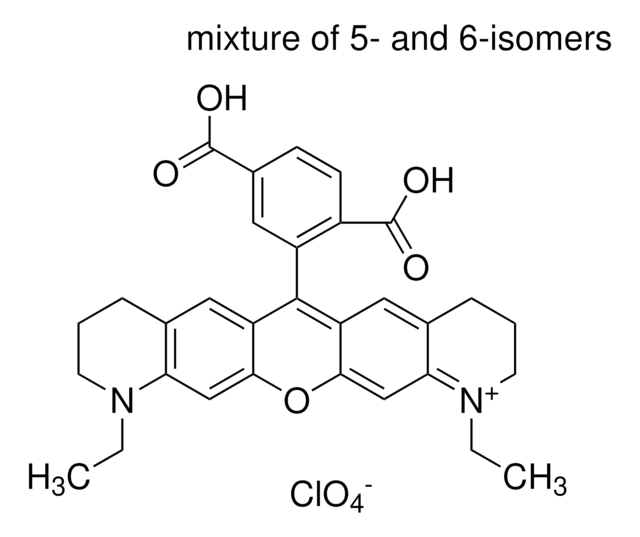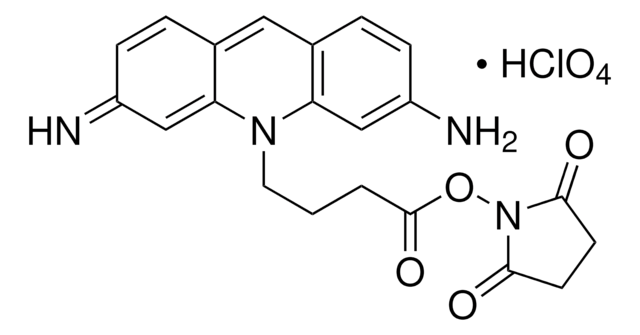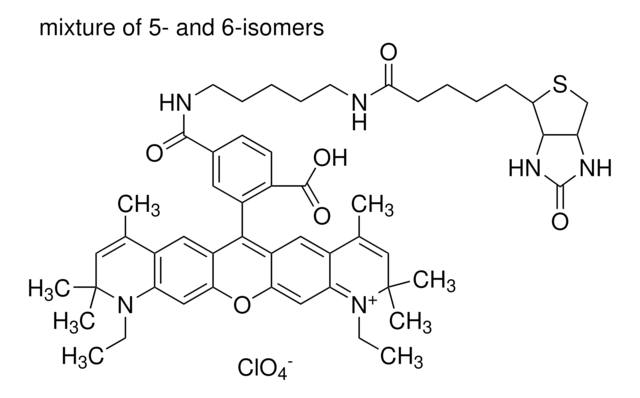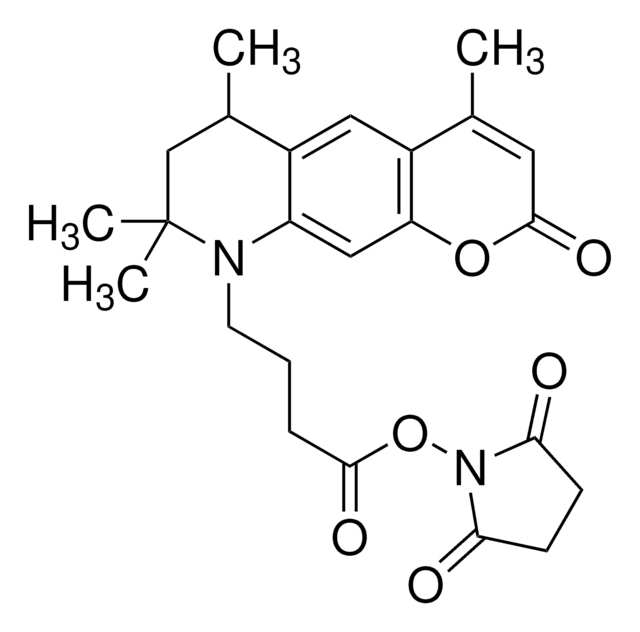79636
Atto 590 NHS ester
suitable for fluorescence, BioReagent, ≥90.0% (degree of coupling)
About This Item
Recommended Products
product line
BioReagent
Quality Level
Assay
≥90.0% (HPLC)
≥90.0% (degree of coupling)
form
powder
manufacturer/tradename
ATTO-TEC GmbH
λ
in ethanol (with 0,1% trifluoroacetic acid)
UV absorption
λ: 597-663 nm Amax
suitability
suitable for fluorescence
detection method
fluorometric
storage temp.
−20°C
InChI
1S/C41H41N3O7.ClHO4/c1-9-42-31-18-33-29(16-26(31)22(3)20-40(42,5)6)37(30-17-27-23(4)21-41(7,8)43(10-2)32(27)19-34(30)50-33)28-15-24(11-12-25(28)38(47)48)39(49)51-44-35(45)13-14-36(44)46;2-1(3,4)5/h11-12,15-21H,9-10,13-14H2,1-8H3;(H,2,3,4,5)
InChI key
SHJDVERDESTYRQ-UHFFFAOYSA-N
Looking for similar products? Visit Product Comparison Guide
General description
Application
Features and Benefits
- Absorption maxima cover a range from 590 to 620 nm.
- Structural properties support extraordinary photostability.
- High fluorescence quantum yield and high thermal stability.
- The fluorescence characteristics of the dye are quite insensitive to environmental changes (e.g., pH changes). This holds for both excitation and emission wavelengths and for the decay time of their fluorescence emission.
- Compatible with common labeling procedures for proteins and amino-functionalized oligonucleotides.
Other Notes
Legal Information
Not finding the right product?
Try our Product Selector Tool.
Storage Class Code
11 - Combustible Solids
WGK
WGK 3
Flash Point(F)
Not applicable
Flash Point(C)
Not applicable
Personal Protective Equipment
Certificates of Analysis (COA)
Search for Certificates of Analysis (COA) by entering the products Lot/Batch Number. Lot and Batch Numbers can be found on a product’s label following the words ‘Lot’ or ‘Batch’.
Already Own This Product?
Find documentation for the products that you have recently purchased in the Document Library.
Customers Also Viewed
Articles
Fluorescent Labeling of Peptides
Our team of scientists has experience in all areas of research including Life Science, Material Science, Chemical Synthesis, Chromatography, Analytical and many others.
Contact Technical Service
